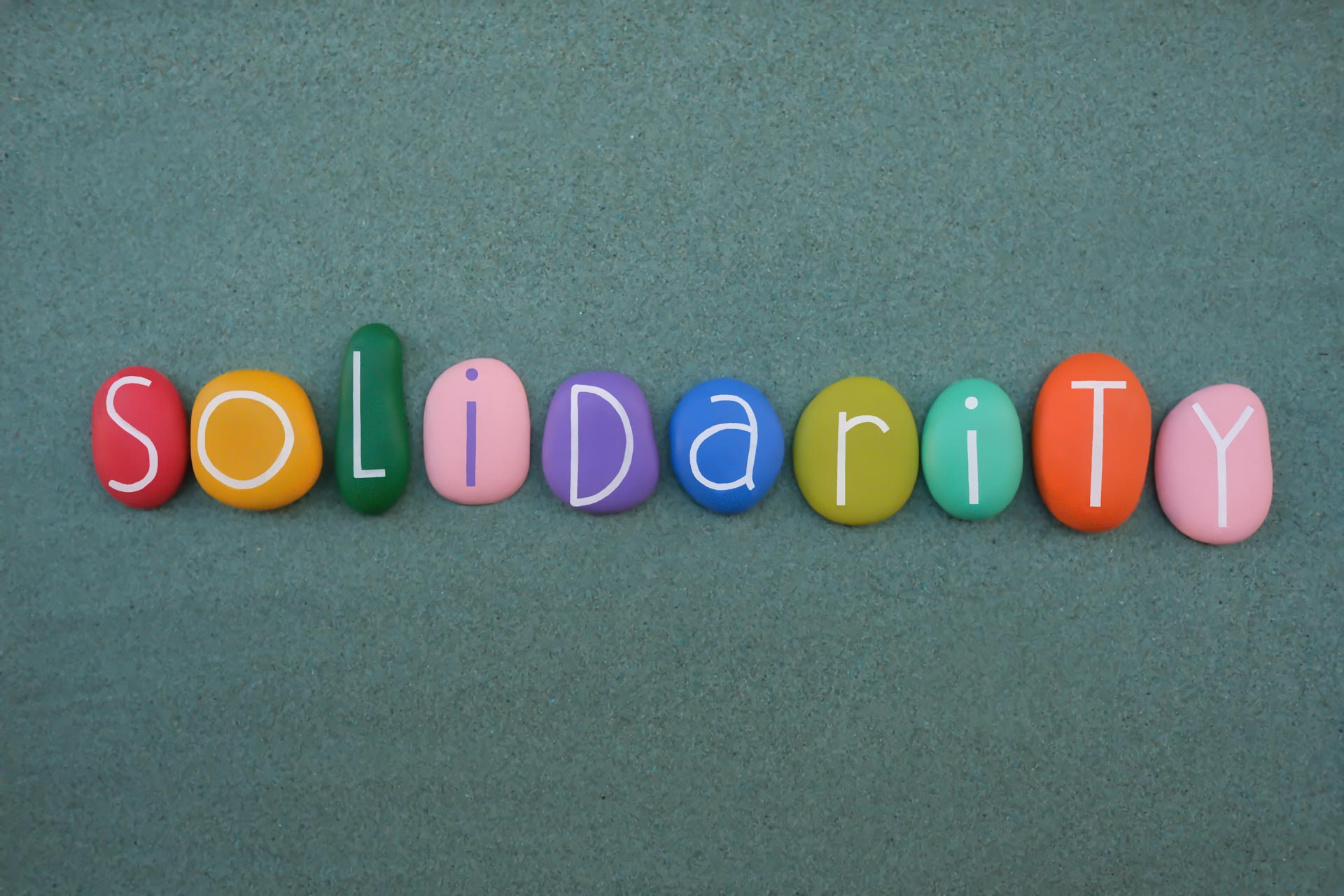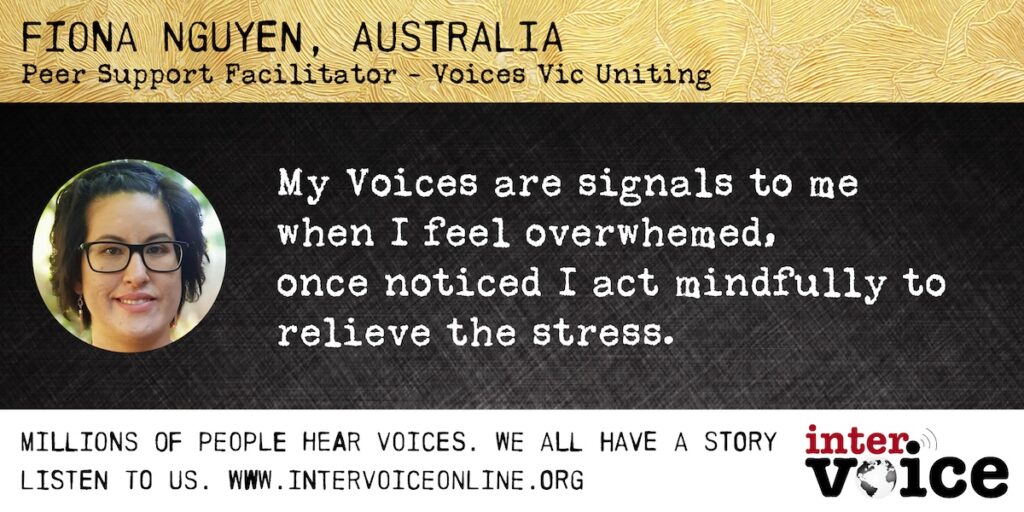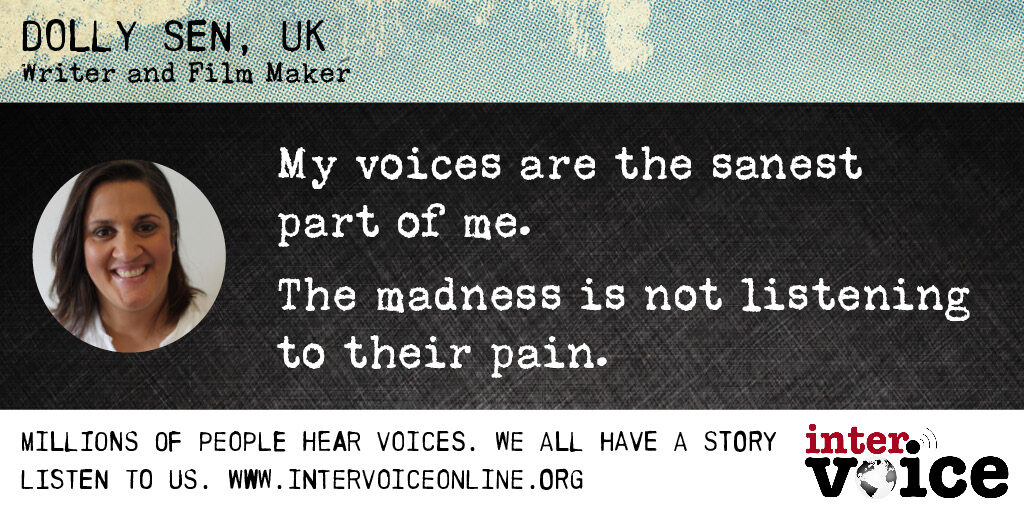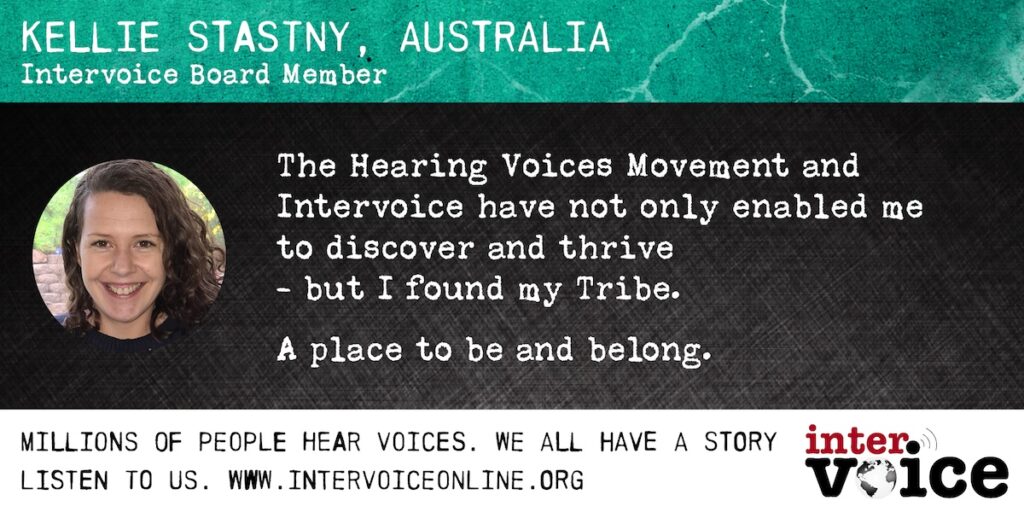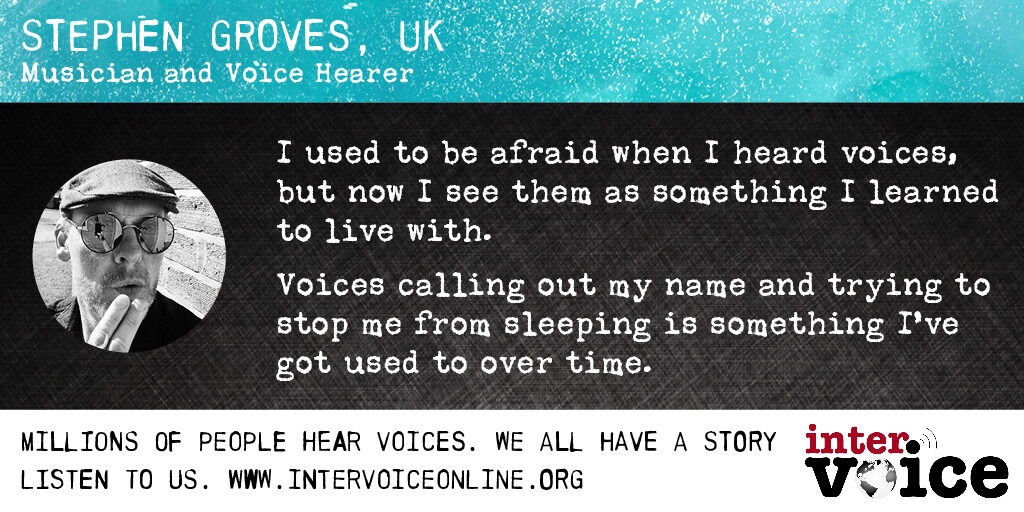Congress Parallel Sessions
Parallel Sessions Day One
Parallel Session 1: Spirituality and different belief systems
Patrick Le Cardinal & a paper by Sonia Johnson
“Where do the phenomena (voices, tastes, visions, smells, physical phenomena in general) actually come from?”
A paper from Sonia Johnson (read out on her behalf) described the approach she promotes France where she had set up the first hearing voices group. She discussed guardian angels and other non-hierarchical deities, lay lines, shakras, natural spirits (energies e.g. when we witness branches moving when there is no wind) and when we find unexpected energies such as being prompted to do housework in the middle of the night. Have we ever thought to ask their names?
Patrick Le Cardinal described himself as a psychiatrist and a human being. He talked about the history of voice hearing, starting with earliest times when voice hearing would have been a survival tool. Patrick described different cultures which had developed habits of dealing with spirits and how this knowledge had been lost with the development of civilisation. There are cultures which build houses for gods e.g. temples where the gods devolve power to priests and where voices are not considered abnormal. In the three main monotheistic religions God talks to humans. Priests and Imams are able to exorcise demons. In the Middle Ages, there was a less tolerant approach with women being burnt as witches, but with one later admitted to be a mistake: Joan of Arc.
Patrick explained a new approach in Lille working with voice hearers describing the stories of a young man from Morocco whose Imam had not been able to help with his voices and another account of a woman who had two male voices instructing her to do opposing things – one to avoid men; the other to go out soliciting on the streets. Patrick described a model that includes a protector/controller; an inner child; an inner critic and a pusher.
Willa Casstevens
“Voice hearing interpreted: coping with spirits, demons and/or stress”
Willa told three stories of people from the United States with different faith backgrounds who had integrated their voice hearing experience into their spiritual beliefs. There was an atheist, a Christian and someone who embraced New Age spiritual beliefs. Willa reflected on the effect of the “person centred environment” such as family support, income, home life. The spiritual beliefs of each person had made a significant contribution to how voices had been welcomed (or not) into their lives. It demonstrates the unique nature of interpretation and experience. Each had a range of coping strategies; however, none of the people viewed their voices as symptoms of illness.
Wendy Micklewright
“Telepathy as old as the hills? If voice hearing is often caused by trauma, could it be telepathy? What do you think? After emailing 900 psychologists with a simple questionnaire their replies were interesting.”
Recent law cases have also been sad, but may indicate how important it is to perhaps think of the voices as one of the 250 million voice hearers on the planet (Catherine of Cambridge, Luton slavery case , Rochdale case, the Blackpool case, literature from the homeless charity (Centerpoint ) or the families of 77 Norwegians)). Words can have strange meanings like the word compromise, insane, pagan, prove, propaganda, rational, forfeit and desensitise.
The voices have also replied kindly to some of my questions on the subject. For example A voice said “are you a human being?” I reply “yes” in the voices then the logic goes we are equal and different as human rights people might think. Some of the voices have said very disturbing things about the idea of control within the voices. Not to mention the idea of talking to the dead within the voices. I have also heard voices in languages I do not understand.
Some of us have hallucinated for 40 years. Reading the testimonies of other voice hearers as well as listening to other voice hearers in a Voice hearing group in Richmond Surrey and attending free voices hearing courses and conferences. Makes you think!
Parallel Session 2: Hearing Voices Research
Clara Humpston
“Schizophrenia is fundamentally a self-disturbance. In this paper I attempt to explain the many facets self-disturbances by disentangling the boundaries between others and self”
Based on the premise that schizophrenia is fundamentally a “self-disturbance” which has been much debated, this presentation explored concepts such as ‘existential permeability’, ‘disorientation’, ‘disembodiment’. Clara presented psychosis as a self-disturbance/loss of self and brought together philosophical literature, her own research and lived experience. She hopes to raise awareness among health practitioners and service users to help in the path to recovery.
Amanda Waegeli
“Outcomes of the Richmond Fellowship voices@work project”
Amanda described the Richmond Fellowship Western Australia ‘Voices at work’ programme which supports voice hearers in work and their employers. Their hypothesis was that supporting people with coping with distressing voices would result in better engagement at work. Voice hearers are sometimes thought of as lacking motivation or being unable to engage. Amanda described a project that had successfully engaged with 25 voice hearers working towards employment. She described the work necessary to build relationships, increase trust and give hope to people who have often felt let down.
The project’s outcomes included higher confidence, greater understanding and more coping strategies. It showed how hearing voices support with an employment focus can have a far-reaching impact on recovery with concrete outcomes such as getting a job.
Joachim Schnackenberg
“Experience focused counselling with voice hearers – early feedback from randomised controlled studies”
Joachim described a randomised controlled pilot study in Experience Focused Counselling (EFC) with voice hearers (using ‘Making Sense of Voices’). The study consisted of interviews and validated questionnaires with scales to see if the intervention had effected any changes. Joachim emphasised the difference between EFC and CBT and explained the set-up of the trial. The audience were impressed by this ambitious trial.
Wendy Traynor
“Is Person-centred Experiental Therapy helpful to adults who hear voices?”
Wendy described her doctoral research using structured change interviews to find out what was helpful in the therapy process. It comprised three studies, the first with semi-structured qualitative interviews with twenty person-centred practitioners; a systematic mixed method study case using the Hermeneutic Single Case Efficacy Design (HSCED); and data collected from a sample of fifteen participants who had received PCE therapy as clients. Early results show a wide range of outcomes including positive changes in relation to social anxiety. There is a need for empathy, acceptance of client’s reality and a multi-disciplinary approach. Outcomes for some voices could improve without them necessarily being talked about. However, the study had some limitations including its small sample size.
Parallel Session 3: Workers changing practice
Pino Pini
“The importance to link closely the voice hearers groups to user and relative associations and to services. A Tuscany experience”
Pino’s presentation was a factual survey of the progress of the Hearing Voices movement in Tuscany since the 1980’s, culminating in the establishment of Parla Con Le Voci in 2006. There are currently over 20 HV groups listed on the Parla Con Le Voci website, across Italy. Historically, Tuscany mental health services have tended to exclude both the voluntary sector and the user groups.
The first hearing voices group in Italy, using the approach of Romme & Escher, started in 1998 when AISMe (Italian Association for Mental Health, founded in Prado in 1993) invited prominent user-survivors from UK to Italy to talk. The mainstream mental health services in Prado refused responsibility for the project. They tended to prefer their own more generalised psychiatric self-help groups which were easier to control. The result was a sense of competition between the old and the new groups. However, the municipality and the GPs were more supportive.
AISMe uses a model of co-operation between users, municipality (e.g. local politicians) and MH services – termed the Joint Experiences and Mental Health Systems Project. The term refers to the interface between statutory mental health services and local community, where most of the joint experiences between different service providers and community agencies are located. Joint working between different statutory agencies is no longer enough: the whole system requires re-engineering and re-adaptation from the perspective of service users and carers.
Loretto Foster
“Leading by Following: the power of the hearing voices approach to transform a mental health team”
The key concept presented by Loretta was ‘leading by following’. She manages a 17-strong Mental Health Team in Melbourne, four of whom have disclosed lived experience. Her story was all the more inspirational for the fact of coming from a Manager who has no direct involvement in clinical work, and whose understanding of Hearing Voices has all come second-hand through the enthusiasm of her staff. She hesitates to call the change bottom-upwards because, for her, it seems more like a movement outwards. She used the term ripple effect. For the team, it has meant changes not only in how they view service users, but how they view each other, and even how each person views him/herself – and the freedom to relate to one another on a more human level.
Five or six years ago, certain members of her team had their first contact with Ron Coleman and began training in Voice Dialogue. This was followed by visits from Jacqui Dillon and Rufus May. It became clear to Loretta as this way of working took hold of her team, that, with HV being a grass roots movement, it was impossible to know what might happen next and she decided (in her words) simply to ‘hop on and hang on’ instead of following the usual managerial requirement to predict outcomes.
Objections arising both within their own minds, and from colleagues in other teams or in senior management, include: ‘Are we skilled enough?’ and ‘Shouldn’t psychologists be doing this?’. She spoke wryly of having acquired a (false) reputation for encouraging service users to reject drugs and refuse treatment. Her enthusiasm was really infectious, saying: ‘It’s simple truth, not science. It doesn’t look complex enough to be science – it just works!’ Of all the quotes she has reviewed, she is proudest of one from a team member (speaking of how the team is seen by service users): “They know that we want to know”.
Susan Ruggari
“The MHC experience: transforming a private secure unit to be recovery orientated and embracing the hearing voices approach”
Susan is a counselling psychologist working for a private healthcare company Mental Health Care in two secure hospitals in Wales: Plas Coch (all-female) & New Hall (all-male). Her previous careers include high school teaching and couples counselling. She has written a published thesis on Asperger’s syndrome and humour and ran a support group for people with Asperger’s. She describes a common thread running through all her jobs as ‘working with individuals to explore the constraints of the systems they are immersed in’.
Susan spoke vividly of her shock and disbelief when starting hospital work, at the discovery of people being provided with medicine and distractions but nothing that actually addresses their problems. And they are simply left there long-term. In 2010, she set up a HV group at New Hall which has 10 participants; another at Plas Coch has proved less successful because Susan is not directly involved in running it, and in consequence it isn’t taken seriously (by management). Susan identified two of her best tools in the ongoing effort to sustain these groups, as being the supervision process and the peer support groups run by and for the facilitators themselves. Comments she’s received from her team include: “an opportunity to learn about who I am as a person,” and, “the trust he has in me is something you can’t buy in a shop.”
Last year 20 of her colleagues together with a number of ‘patients’, or experts by experience, were trained in the Hearing Voices method (voice profiles, Maastricht Interview, etc) by Ron Coleman and Eleanor Longden. Susan provided a very colourful and amusing description of how she lost her temper with colleagues during the training because some of them were objecting to sharing the kitchen facilities with those whom they normally thought of as ‘patients’.
Marion B. Goldstein
“Working as a voice hearer at a crisis centre”
Marian is an expert by experience, and voice hearer. Marian first encountered mental health issues at the age of 40, when she saw a choice between suicide or talking with a CBT psychologist. Then she researched other treatments online and was so horrified at what she found, she became a ‘radical activist’. She was headhunted in January 2011 for her current job as the only voice hearer on a team of 10 at a recovery-orientated, ‘non-biological approach’ Acute Crisis Centre in Denmark. Marian used the word ‘indoctrinated’ to describe people who come to the Crisis Centre believing that their distress is an illness: The helplessness is huge, enormous…..sometimes I really feel a bit alone and fighting windmills. She feels frustrated because of the constraints of the service she is part of being short-term only, which means having no choice but to refer people on to mainstream psychiatric services where the treatment will be medical. She is also uncomfortable providing the truth to people taking anti-psychotic medication about how much harm their medication is doing them, since this amounts to recommending they cease taking it, and she is careful to recommend that any withdrawal from these drugs be gradual.
Parallel Session 4: People’s recovery stories
Four people from different parts of the world shared their personal histories of voice hearing. They had in common experience of psychiatric systems that left them without hope and yet all were able to make a recovery journey through encounter with the hearing voices movement. One person said “now my future looks very bright.”
Workshop One: “Setting up and running Hearing Voices networks” (Indigo Daya & Paul Baker)
This was an interactive workshop run by two people with extensive experience of setting up networks in Australia and in the UK. The workshop gave participants the opportunity to share their experiences, set goals and address some of the practical problems of developing or creating networks.
Workshop Two: “Training on making sense of voices” (Peter Bullimore & Chris Tandy)
This workshop focused on a recent training initiative developed by the presenters which aims to raise awareness of voice hearing. It is aimed at people who work in mental health, in the criminal justice system or in third sector agencies and who work alongside people who experience voices. It addresses the need to challenge misconceptions and myths used to challenge psychosis. It also offers practical strategies for people who hear voices or see visions.


